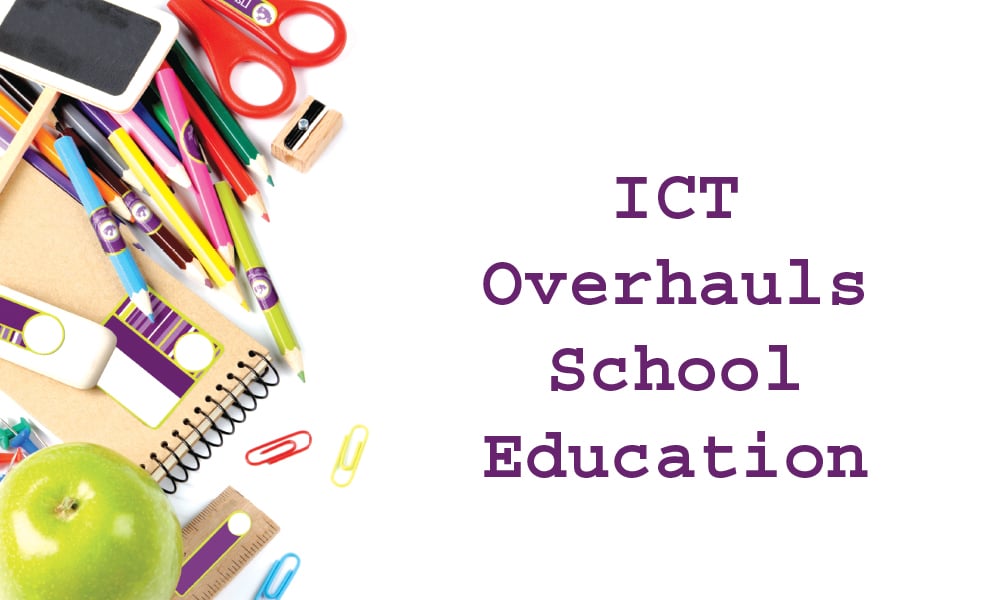
Information and Communication Technology in school education is primarily associated with the use of computer and internet. Sadly, a few questions as to what one uses ICT for and how one uses it are addressed vaguely. Nikita Bothra from Elets News Network (ENN) delves deep into the topic, bringing forth consolidated opinions and viewpoints of school education leaders.
21st century is marked with the emergence of knowledge based society wherein ICT plays a pivotal role. The National Curriculum Framework 2005 (NCF 2005) has also highlighted the importance of ICT in school education. With this backdrop, a major paradigm shift is indispensable in education characterised by imparting instructions, collaborative learning, multidisciplinary problem-solving and promoting critical thinking skills.
Why ICT in Schools?

Director- Podar Group of International Schools, Mumbai
In modern society, ICT plays a remarkable role in school education- provides endless opportunities for teachers to transform their practices while students get access to improved educational content along with effective learning methods. ICT improves the learning process through the provision of more interactive educational materials that increase learner’s motivation and facilitate the easy acquisition of basic skills. In primary and secondary level, the use of various multimedia devices such as computer application, OHP, videos, television and the like offer more challenging and engaging learning environment for students. In the twenty 21st century, teaching learning skills underscore the need to shift from traditional teacher centered pedagogy to more learner centered method. “Our school and students have always been ahead of times,” says Dr. Vandana Lulla-Director, Podar Group of International Schools, Mumbai. “ We use e-books and cup-my-bag software tool to reduce the burden of bags of the students. Besides, we also use Google classroom for higher grades where our teachers make all their lesson plans on Atlas software that can later be accessed from anywhere,” she added.
Today’s students are surrounded with computers, game stations, smartphones, kindles and apps that have every possible activity and interest covered. Constant exposure to digital media had changed the way these students think and interact with reality. They are digital citizens. Intuned with modern global trends in the field of ICT, it is more than imperative to change the way teaching happens; learning needs to become more personalised and e-learning is the answer.

Principal – Oakridge International School
Hyderabad
On the same grounds, Gustav Jacobus Gropp – Principal, Oakridge International School, Hyderabad thinks, “Tech tools like Edmodo, EduBlogs, ePals, OpenStudy, Skype and Animoto pull together great lessons and helps design amazing and memorable student projects. While educational tools like Socrative, Carrot Sticks and FunBrain make lessons fun and exciting.”
Flipping the Instructional Approach
Scholars and practitioners have reported the positive outcomes of a flipped, or inverted, approach to instruction. Flipped classroom teachers almost universally agree that it’s not the instructional videos on their own, but how they are integrated into an overall approach, that makes the difference. Students can’t just “watch the video and be done with it.” It takes a little while for students to get used to the system, as the year pro-gresses a teacher sees them asking better questions and thinking more deeply about the content. After flipping his classroom, the teacher can more easily query individual students, probe for misconceptions around scientific concepts, and clear up incorrect notions.

Principal – Vidya Bhavan Public School
Indore
On the same grounds, Jaydeb Kar – Principal, Vidya Bhavan Public School, Indore, responds, “There is no fixed formula for the flipped classroom. Every implementation will differ because of wide variables such as class size, discipline, teaching method, technology and resources. A general objective is that there is a better focus on students’ concept exploration, understanding and demonstration with more opportunities for discussion, formative appraisal and feedback.”
Echoing the same, Dr. Lulla considers, “Flipped teaching as the ideal methodology for students in the 21st century.” The teacher should only help to facilitate their learning and let the students take centre stage. This will make them responsible for their own learning. However, there would be students who would need more of hand holding and scaffolding in flipped teaching. “This method itself allows the teacher to devote rough tube to such emerging learners and gives more scope to independent learners to research on their own,” she adds further.
Advantages of ICT in School Education
Like other developing countries, India uses ICT as a teaching tool. Its potential for improving the quality and standards of pupils’ education is signifi cant. Students using voice communication aids gain confi dence and social credibility at school in their communities. Increased ICT confi dence amongst students motivates them to use the internet at home for school work and make their curiosity fulfi ll. Besides, computer can improve independent access for students to education where the students with profound and multiple learning disabilities can easily communicate more. Further, visually impaired students using the internet can access information along with their sighted peers.
Government’s Nod to Technology in Schools
In India, various ICT tools have been employed over the years to promote primary and secondary education. These include radio, satellite-based one-way & interactive television and the internet. However, there have been enormous geographic and demographic disparities in their use. Some states in the country currently have an enabling environment in place that allows for a greater use of ICT tools for education, whereas other states lack such an environment making the use of ICT for this purpose very sporadic. The Government of India’s fl agship education programme at the primary level – the Sarva Shiksha Abhiyan (SSA) – has streamlined its focus on quality.
Roadblocks in Implementation
In Indian school education system, ICT has a great role to enhance the quality of education. Out of 150 smart schools, 63 smart schools have so far been approved in 12 states and 3 UTs under ICT in Schools scheme. But, regrettably there are some barriers to make the school education completely ICT based.
ICT can be employed in formal and non-formal types of education and would eventually make the learners employable and socially useful part of the society

Principal – Bompay Cambridge School
Mumbai
The reasons being lack of teacher’s competency to handle ICT equipment’s and dearth of proper infrastructure further posing hurdles. Schools and colleges acquire computers, Internet connection, LCD projectors and then send their teachers for crash courses that supposedly teach them to use technology. The trouble is this whole approach is devoid of focus. But, until teachers are made to realize the need of ICT, no amount of computerization can help.
A Close Watch
Dr. Lulla states, “ Schools are here to stay and will not be replaced by online education or digital education but higher education may undergo transformation. Schools are not only developing students academically but also socially and culturally and thus the growing up formative years require the nurturing of a teacher. Contradicting her statements, Savita Venkat- Principal, Bombay Cambridge School, Mumbai says, “ Five years down the line, the teachers’ role in the classroom will not be for pedagogical learning but for values, humanisation, responsibility to society and creating change through pedagogy. This is because technically, pedagogy can be received by students from experts from everywhere within the comforts of home.”
Nonetheless, as the integration of ICT in education rises and evolves with evermore sophisticated tools, and participation and transition rates to higher levels of education increase, children and adults will increasingly need to develop digital literacy, not only for life skills but also to support their education throughout the secondary, post-secondary and tertiary levels. The early integration of ICT into primary and secondary curricula through formal recommendations is therefore vital and moreover acts as an important lever for ensuring the introduction and implementation of ICT into educational institutions and classrooms.
Future Prospects
Quality in education through ICT and its awareness among stakeholders will have positive impact on the society. ICT can be employed in formal and non-formal types of education and would eventually make the learners employable and socially useful part of the society. Employing ICT in teacher training can save a lot of money of the government. Moreover a lot of qualitative improvement can be seen as resource persons for the training can be best of the world. By employing ICT in administration, it can help in solving the problem of absenteeism of students and teachers. Good quality content is one of the major issues and directly affects the standards of education and quality. By overcoming the certain challenges involved in the process of education, it can help a lot in this side. Conclusively, a lot of quality improvement is possible after careful and planned implementation of ICT in school education by various stakeholders.






















